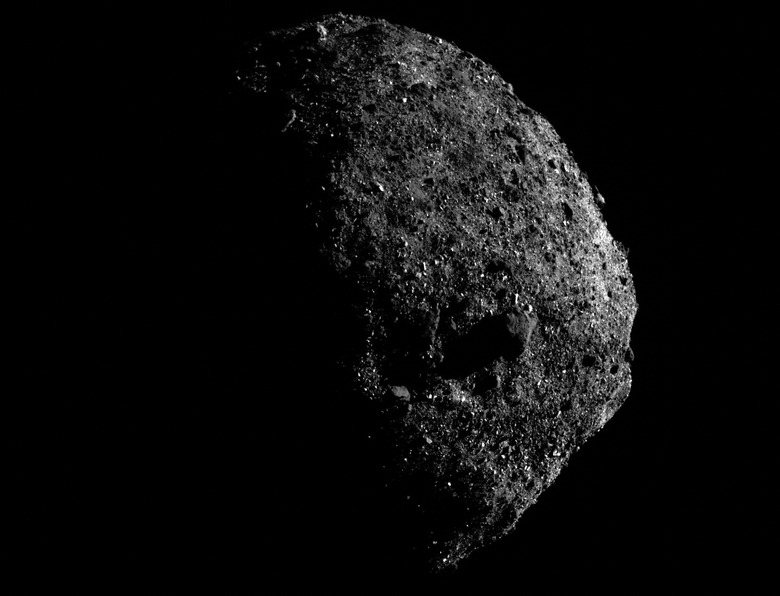Can NASA's Asteroid Probe Grab A Sample Without Being Destroyed?
- NASA's OSIRIS-REx asteroid probe just nailed its second trial run for a sample collection attempt in October.
- The goal is to obtain samples from the surface of the asteroid Bennu and then return them to Earth.
- The spacecraft has been in orbit around Bennu for many months and has sent back some great photos already.
NASA's OSIRIS-REx asteroid probe has been cruising around the space rock known as Bennu for many months now. The spacecraft has already made some stunning observations of the asteroid's surface and taught it handlers a lot about the rock that it's currently orbiting. That's all great, but the riskiest and most important part of its mission is only just beginning.
NASA wants its high-tech probe to do a brief touch-and-go sample collection of material from the surface of the asteroid. It's been practicing this maneuver over the past several months, bringing the probe closer and closer to the surface before returning it to a safe orbital distance. Now, with its most recent "rehearsal" completed, the spacecraft is just about ready to make its fateful dive and attempt to pull off the dangerous stunt.
As NASA explains in a new blog post, its recent test run of the maneuver took roughly four hours to complete. During this test, the spacecraft performed a burn that allowed it to leave its previous orbit, followed by a second burn that gave the spacecraft the information needed to match Bennu's speed and rotation. The final burn put the spacecraft in the correct position and adjusted its speed to match the rock's rotation.
It's after these three steps that the spacecraft will eventually dip down toward the asteroid and snag a sample from its surface. Doing so is incredibly dangerous as any misstep could result in the total destruction of OSIRIS-REx and bring an abrupt end to the mission.
The sketchy maneuver is further complicated by the fact that NASA can't control the spacecraft in realtime, or anything even remotely close to it. It takes over 15 minutes for signals from Earth to be received by the probe, meaning that when the time comes to carry out the collection, NASA will send the command and then have to wait and see whether the spacecraft performs as well as it has during its rehearsals.
"Many important systems were exercised during this rehearsal – from communications, spacecraft thrusters, and most importantly, the onboard Natural Feature Tracking guidance system and hazard map," Dante Lauretta, principal investigator of the OSIRIS-REx mission, said in a statement. "Now that we've completed this milestone, we are confident in finalizing the procedures for the TAG event. This rehearsal confirmed that the team and all of the spacecraft's systems are ready to collect a sample in October."
Assuming the spacecraft can pull it off, it will eventually depart Bennu and head back to Earth where scientists will be eager to examine pieces of the space rock up close.
